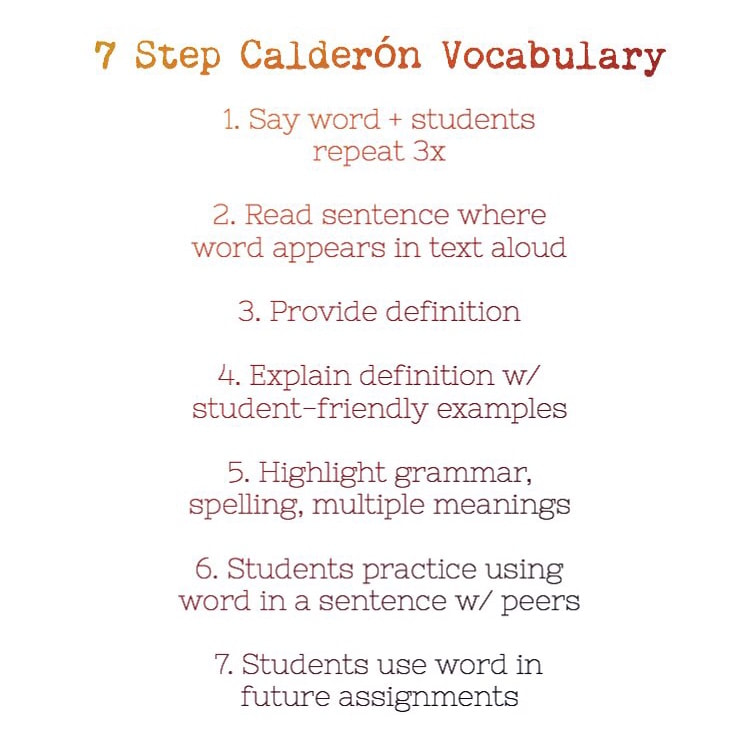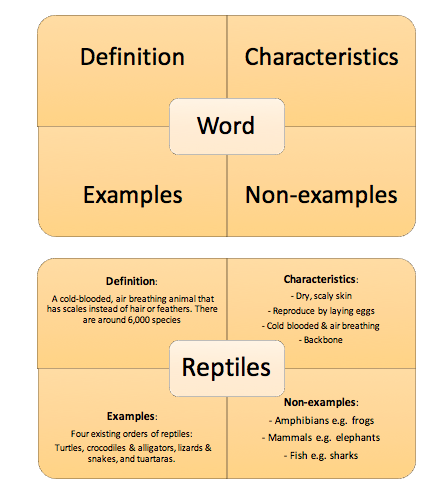There are so many different education “gurus” out there that can tell you their favorite way to teach vocabulary, but I am pretty sure that they would all agree on one thing: teaching students new words from a dictionary is not sufficient. In fact, Dr. Robert J. Marzano states this from his article, “Tips From Dr. Marzano: Vocabulary for the Common Core”:
Using dictionary definitions to teach vocabulary is usually ineffective.
Alternatively, descriptions rather than definitions can be used to explain and exemplify words by illustrating the word in sentences or explaining it in contexts in which it is commonly used. This helps students gain a clearer understanding of the word and how it is generally used (pp. 15–16).
Instead of starting with a dictionary, start with your curriculum for guidance on how to teach vocabulary in context.
Start with the Text
The key is to start with the text in order to choose the task. And unless you are teaching an intervention class or English Language Development class, this should be a grade-level text.
Even if students are not quite there yet, Cindy Jiban explains from her article, “Let’s talk equity: Reading levels, scaffolds, and grade-level texts”, “misusing reading levels is an equity issue. You deny students the right to improve their reading comprehension if you don’t grant them access every day to some meaty grade-level text.”
So, what text will your students be reading from the curriculum? Once you identify that, you can start planning your vocabulary instruction. First, teachers should design a self-assessment for students to complete. The self-assessment should be targeted towards tier 2 words, and some tier 1 words if you teach newcomers. If you need a refresher on this, Marilee Sprenger explains in “The Three Tiers of Vocabulary Development” that tier 1 are common and everyday words, tier 2 are words used across the content-areas, and tier 3 are content-specific vocabulary words.
After students complete the self-assessment and you’ve analyzed their responses, follow these steps from Dr. Diane Staehr Fenner via Dr. Scott Baker’s research in order to find what words to pull out and teach. Teachers should look for words that:
- Are key to understanding the text and likely unfamiliar to students.
- Are frequently used in the text.
- Are used across disciplines (general academic vocabulary).
- Have multiple meanings.
- Have affixes (prefixes or suffixes).
Before Reading
Once you have identified some vocabulary that your students need to know, it’s time to pre-teach them with some explicit instruction. In an Instagram poll I hosted, @thecraftyellteacher recommended to “pull the word from a read aloud, explicit definition and examples with visuals. Practice using the word.” One strategy that encompasses these suggestions all together is Margarita Calderon’s 7 Step Vocabulary. This is a quick way to introduce the word, give the definition, examples, a word study, and some student practice. Calderon recommends pre-teaching 5-7 words per day.
@Writingupanddown also recommends to use photos and to “backwards plan to identify academic words students will need.” Backwards planning helps teachers get clear on what they want to focus on in teaching a concept or vocabulary. If you made the pre-assessment, this is easy. You’ll be able to quickly make connections with images to words you’ve already pre-defined as being important. For more details about effective lesson planning during these trying online teaching times, check out our article “How to Plan an Online Lesson” for some great tips.
Another teacher suggested getting clear by “getting information based on what students know about a topic then building background.” Reading Rocket’s article on building background says that “put simply, the more you know about a topic, the easier it is to read a text, understand it, and retain the information.” They recommend building background by teaching words in categories, using contrasts and comparisons, using analogies, encouraging topic-focused wide reading, and embracing multimedia.
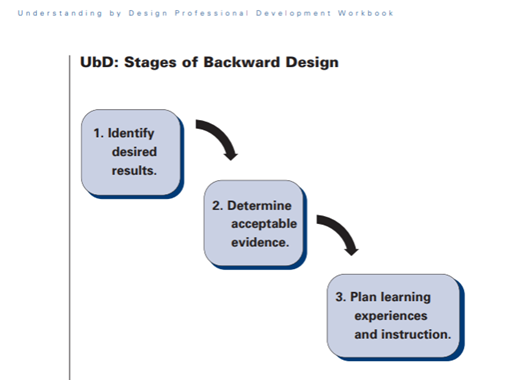
During Reading
While reading a text, students can authentically practice their vocabulary that was pre-taught in different ways. @Edna_ivette_ suggests to “use a word bank to fill out sentence frames.”
This teacher’s sentences and word banks are a great example of using these scaffolds with visuals for understanding the text while reading. For example, the teacher may have students read a chunk of the text and then turn to a partner to complete these sentences.

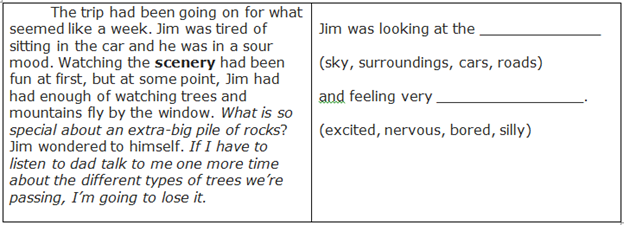
Another teacher suggests to “use realia or photographs and video to help make connections.” Realia is a fancy word for “real-world” items. Even if virtual teaching, realia can be a powerful way for students to connect with words and concepts. Ms. Campbell is a pro at using realia with her pre-k students! Check her out in action!
After Reading
A popular option for vocabulary practice after reading is by gamifying them. Dr. Robert Marzano recommends using games, saying that, “Academic games are an extremely effective (but typically underutilized) way to help students engage with academic content.” @Ell_lady agrees and says to “use games for students to practice independently or in a group.” Kahoot is a teacher favorite when gamifying, as well as Quizlet’s game feature for practicing vocabulary.
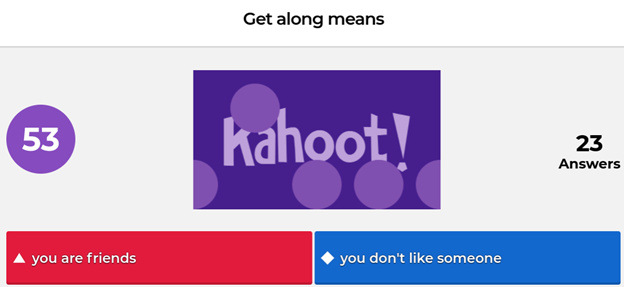
In this Kahoot, a teacher made vocabulary practice for an article on Edgar Allen Poe.
Another great suggestion for after reading practice came from a teacher on Instagram to use “graphic organizers to help students demonstrate their own understanding of the vocab.” One great way to do this is with the Frayer Model. The Frayer Model template can easily be used to introduce vocabulary as well for practice.
Finding Your Own Way
Figuring out what teaching strategies you like and what works for your students is a process. It is all trial and error, and it may mean figuring out what works for your particular students in your classroom. Every student is different and every classroom is different; what may work for one may not work for the other. Check out our article on the four essential reading comprehension strategies that are most vital for helping your struggling readers.
For example, you may have a class with more newcomer English Learners and therefore will need to use more visuals and be more explicit and clear. On the flipside, you may have more advanced English Learners that may need less scaffolding and can complete a graphic organizer without support.
Vocabulary instruction takes a lot of thought and planning. Backwards planning is a tremendous help if we want our students to comprehend and utilize words to be successful in our classrooms. Since students will need to hear the vocabulary in context as well as use it, planning for these tasks in mind sets up our students for success.
- Baker, S., Lesaux, N., Jayanthi, M., Dimino, J., Proctor, C. P., Morris, J. & Newman-Gonchar, R. (2014). Teaching academic content and literacy to English learners in elementary and middle school (NCEE 2014-4012). Washington, DC: U.S. Department of Education, Institute for Education Sciences, National Center for Education Evaluation and Regional Assistance. Retrieved from https://ies.ed.gov/ncee/wwc/Docs/PracticeGuide/english_learners_pg_040114.pdf




